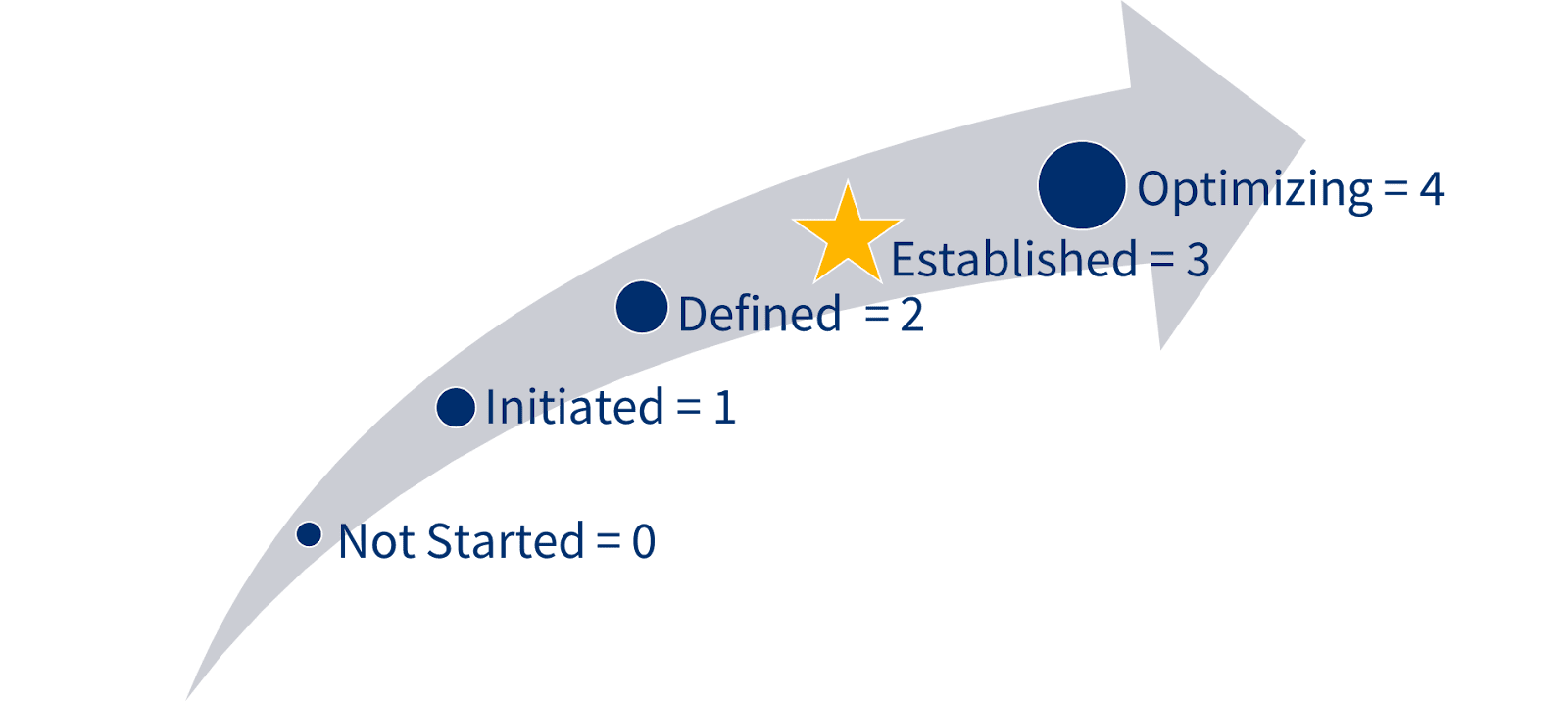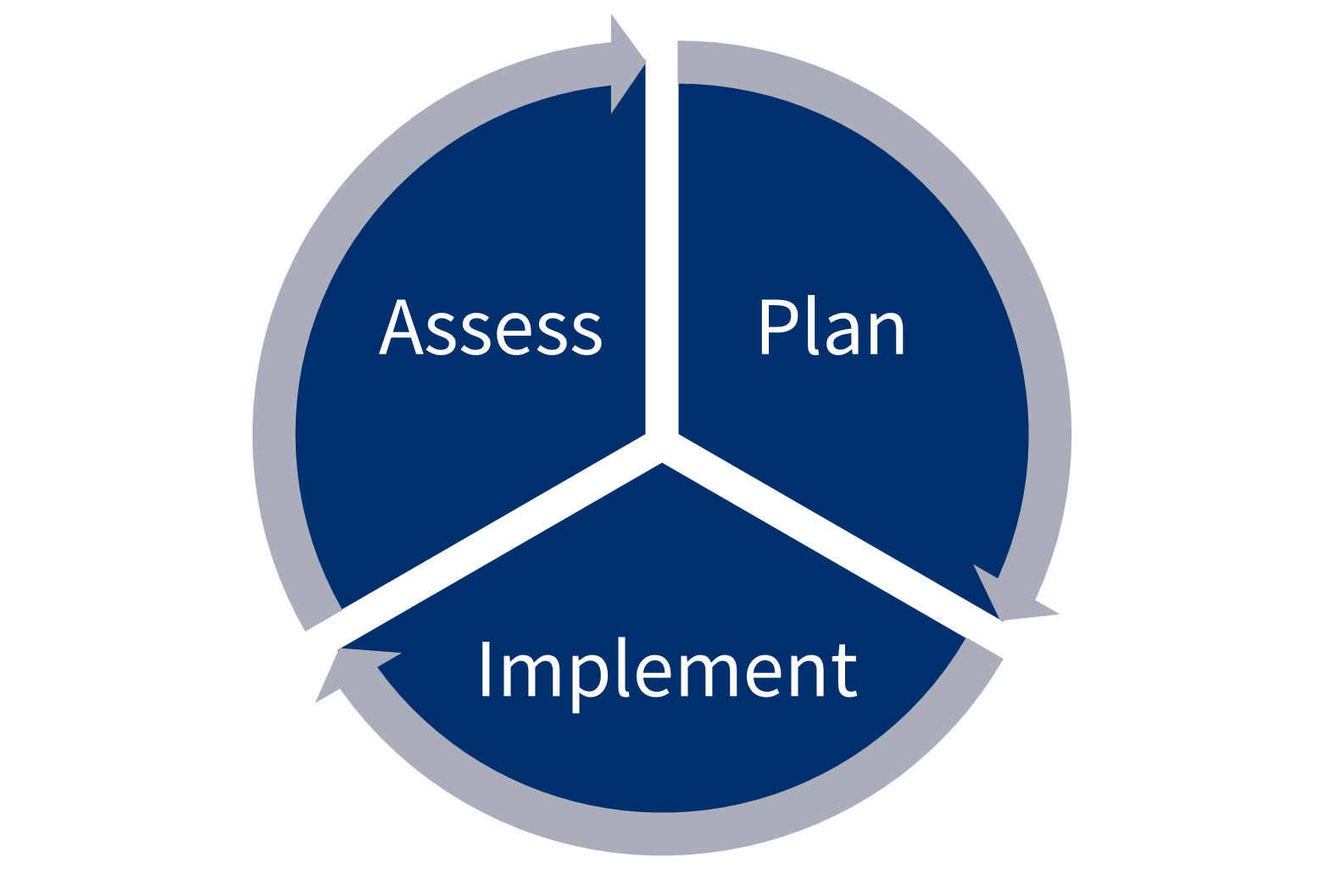ACMM Status Levels
The Accessibility Capability Maturity Model (ACMM) uses status levels to measure how effectively accessibility practices are implemented and maintained. These levels help organizations track their progress and identify areas for improvement.
Status Level Definitions
Each milestone in the ACMM is assigned one of five progressive status levels, ranging from Level 0 to Level 4.
| Status Level | Status Name | Description |
|---|---|---|
| 0 | Not Started | No practices or activities in place |
| 1 | Initiated | Ad hoc or developing practices |
| 2 | Defined | Common practices, but still informal |
| 3 | Established | Standard, formal practices in place (Target status level for the CCC system) |
| 4 | Optimizing | Evolving practices with continuous improvement |

Determining Status Levels
Status levels are determined by reviewing an organization's practices and evaluating evidence submitted to the ACMM team. The assessment uses a standard rubric across five dimensions: processes/procedures, process documentation, resources, scope/scale, and responsibility & authority. Based on these dimensions , each milestone is assigned the appropriate status level along with a calculated numerical score. This score helps organizations track their maturity annually.
Organizations participating in the ACMM will receive in-depth information on status levels, dimensions, and the scoring methodology.
Learn More
ACMM Goals and Milestones
The ACMM consists of 89 milestones organized under 7 goals. Further explanation for each goal/milestone is detailed in an Implementation Guide that will be shared with CCC Colleges and Districts that participate in the ACMM implementation.
Accessibility Capability Maturity Model (ACMM)
The California Community Colleges Accessibility Center proudly presents the Accessibility Capability Maturity Model (ACMM) — a transformative framework designed to guide colleges and districts in advancing digital accessibility. The ACMM breaks down broad concepts of digital accessibility into clear, achievable milestones, ensuring that institutions can proactively improve accessibility at a pace that aligns with their resources.
Benefits of the ACMM
In today's technology driven educational environment, proactively providing equal access to all is critical. The ACMM helps institutions move from a reactive approach, which focuses on addressing accessibility concerns only when they arise, to a proactive and ongoing effort that incorporates accessibility into all aspects of the institution’s technology presence. Benefits include:
- Continuously Improve Accessibility: Make iterative updates to policies, procedures, and business processes, ensuring inclusivity for students, employees, and the public.
- Align with the CCC Vision 2030: Foster diversity, equity, and inclusion by removing institutional barriers for individuals with disabilities.
- Proactively Meet Legal Requirements: Address the needs of the Americans with Disabilities Act (ADA) and Section 508 of the Rehabilitation Act, and incorporate Office of Civil Rights (OCR) recommendations, reducing legal risks.
- Collaborate Across the Institution: Administrators, faculty, and staff work together within an organized framework to enhance the accessibility experience.
How does the ACMM Work?

Assess: Assess the current state of the institution’s business processes against the ACMM Goals and Milestones. For institutions that have chosen to participate, the ACMM Team will visit for a training and provide a baseline assessment
Plan: Use the baseline assessment and provided recommendations to help your institution create an accessibility improvement plan for the coming year
Implement: Over the next year, implement the plan and make improvements to business processes
Repeat: At the end of each year (cycle), reassess to capture maturity and repeat the process each year
Participation
Are you ready to improve accessibility at your institution? To participate, colleges and districts need executive support (Vice President level or higher). Reach out today to

